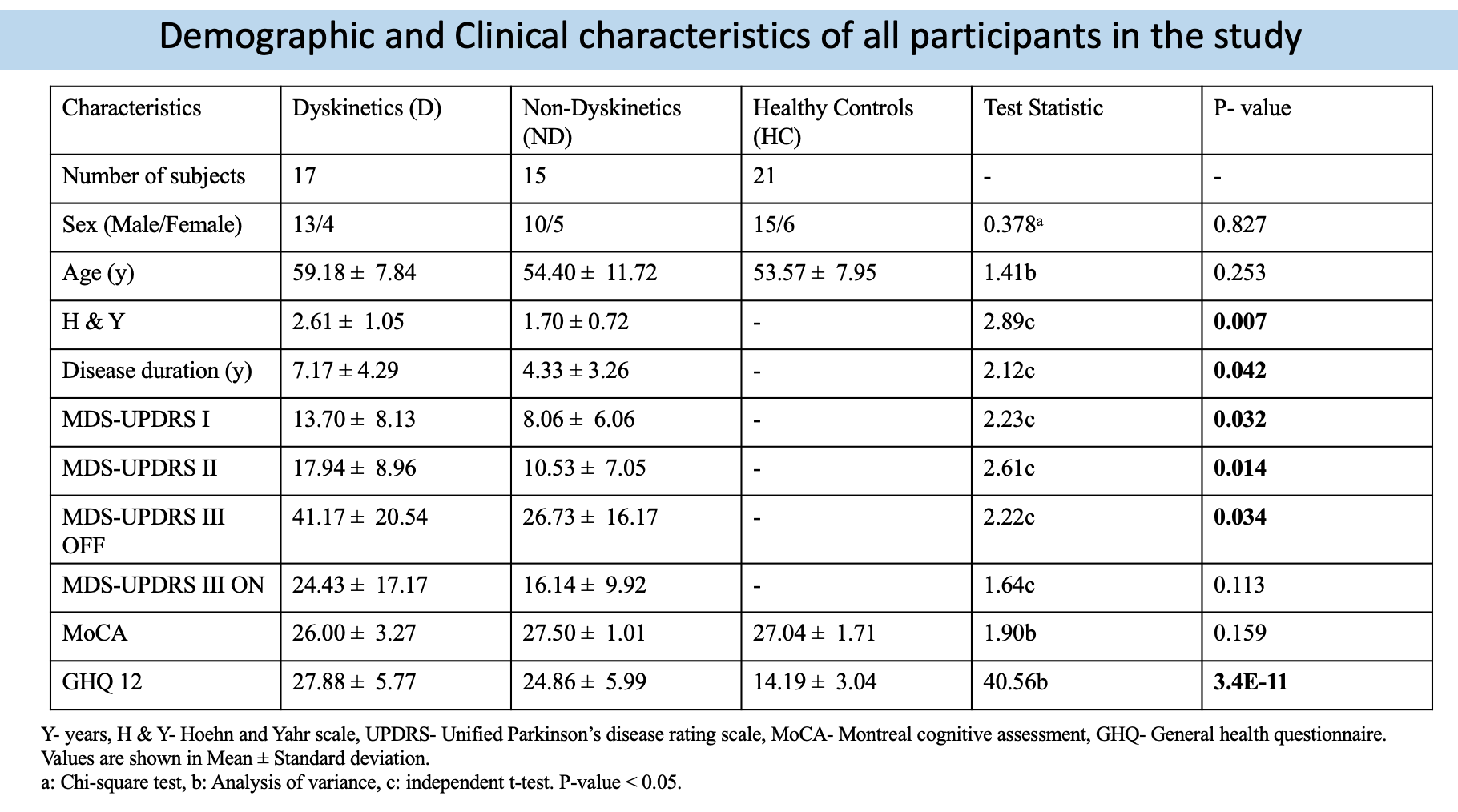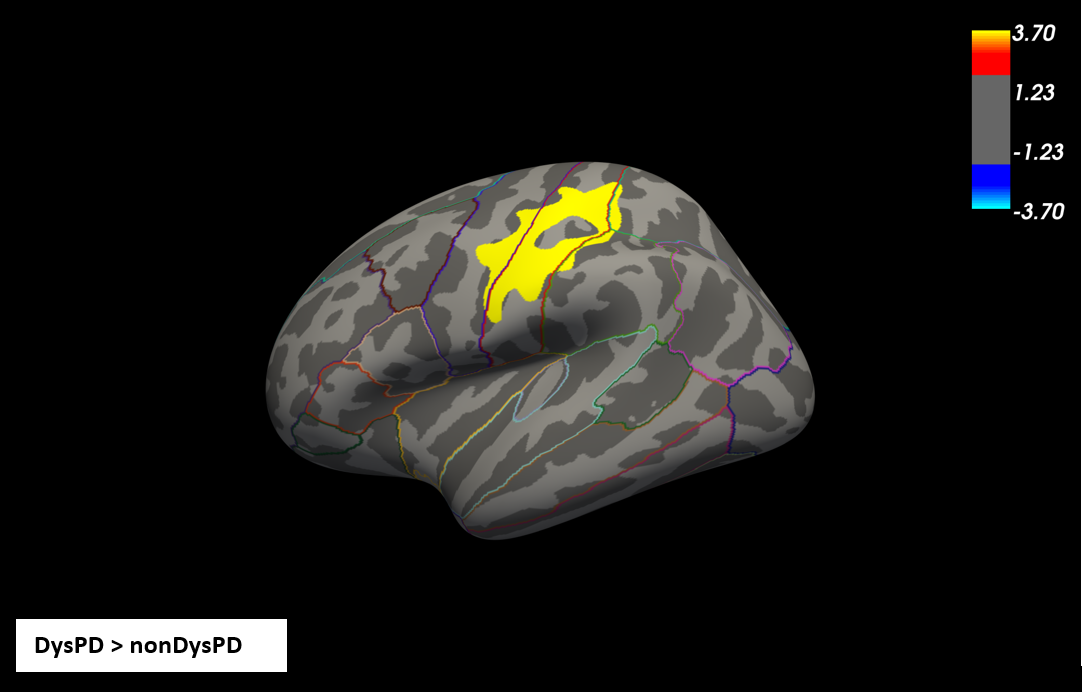Category: Parkinson's Disease: Neuroimaging
Objective: Our objective is to investigate potential differential modulation in motor and executive function networks among patients with LID, and to explore its correlation with brain morphology, clinical characteristics and behavioral parameters. Employing such a multimodal approach will deepen our understanding of the pathophysiology of LID and enable identification of specific functional networks for targeted therapeutic neuromodulation.
Background: LID is a motor complication that arises after chronic dopaminergic therapy in over 40% of patients with PD. Studies have shown that patients with LID show distinct changes in brain morphology and resting state functional connectivity as compared to their non-dyskinetic counterparts. However, there is lack of understanding of how task-specific cortico-subcortical networks are differentially modulated in these patient groups.
Method: We collected structural, resting-state and task-based functional MRI data from 17 DysPD patients, 15 nonDysPD patients, and 21 age- and sex-matched healthy subjects. Patients with mild to moderate PD (H&Y ≤ 3) and with unimpaired cognitive functioning (MoCA ≥ 24) were recruited. MRI was recorded on a 3T Siemens Magnetom Prisma scanner with a 64-channel head coil. The obtained structural T1-weighted data were processed using FreeSurfer v6 to extract volume, surface area and thickness measurements of subcortical and cortical regions. Region-based statistical analysis was performed using SPSS v29.
Results: All three groups were similar in age, sex and cognitive score. Volumetric analysis showed that DysPD patients had significantly larger cortical volume (p-corrected =0.0002) in the sensorimotor region compared to nonDysPD patients. However, cortical surface area and thickness were not significantly different across subject groups.
Conclusion: We found an increase in the cortical volume around the sensorimotor region of DysPD patients compared to the nonDysPD group. Such increased volume may indicate white matter inflammation with chronic dopaminergic therapy in dyskinesia. Next steps in our ongoing analyses involve examining the relationship of these structural differences with resting-state and task-specific functional brain networks. The findings of our research will shed light on the role of distinct task-specific functional brain networks in characterizing patients with LID and their relevance to novel therapeutic strategies.
Demographic and clinical characteristics.
Cortical volumetric analysis.
To cite this abstract in AMA style:
S. Shukla, S. Tinaz, N. Thirugnanasambandam. Characterizing levodopa-induced dyskinesias using multimodal neuroimaging, clinical and behavioral measures [abstract]. Mov Disord. 2024; 39 (suppl 1). https://www.mdsabstracts.org/abstract/characterizing-levodopa-induced-dyskinesias-using-multimodal-neuroimaging-clinical-and-behavioral-measures/. Accessed April 18, 2025.« Back to 2024 International Congress
MDS Abstracts - https://www.mdsabstracts.org/abstract/characterizing-levodopa-induced-dyskinesias-using-multimodal-neuroimaging-clinical-and-behavioral-measures/


